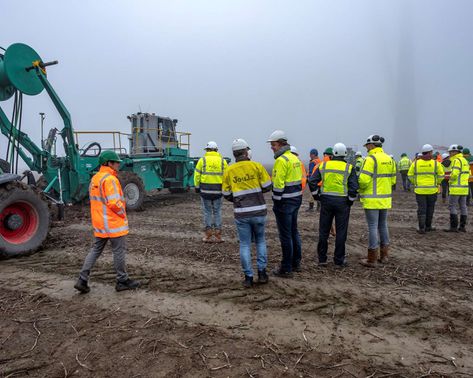'Ploughing' demonstrated
On 16 November 2018, A.Hak Electron demonstrated the soil displacement technique for laying cables in a single process.
The soil displacement technique, also known as ploughing technique, attracted a great deal of interest and enthusiasm from the invited customers.
How does it work?
In the traditional laying of cables, we first dig a trench and pump out the groundwater. We then apply a layer of sand to the bottom of the trench to protect the cables. We lay the cables and then close the trench again. In the soil displacement technique, the soil is opened at the desired depth with a plough.
The plough makes a narrow trench, which is large enough for the cable or cable bundle. It is fed directly into the narrow trench via the plough. In addition, the team can insert sheathing tubes in the same shift, which saves you costs. A package of clean sand can also be placed around the cable or cable bundle for extra protection.
Immediately after the cables are in place, the ground closes again. From the plough, we place a warning tape or cover plates above the cables at the desired depth. All these operations are carried out in a single process. We also save on time and costs because we don't have to, there is time and costs.
Faster and cheaper
By using this technique, A.Hak is able to lay cables faster and therefore often cheaper. A good way to contribute to the improvement and expansion of the electricity grid and thus to the achievement of ambitious climate targets.
